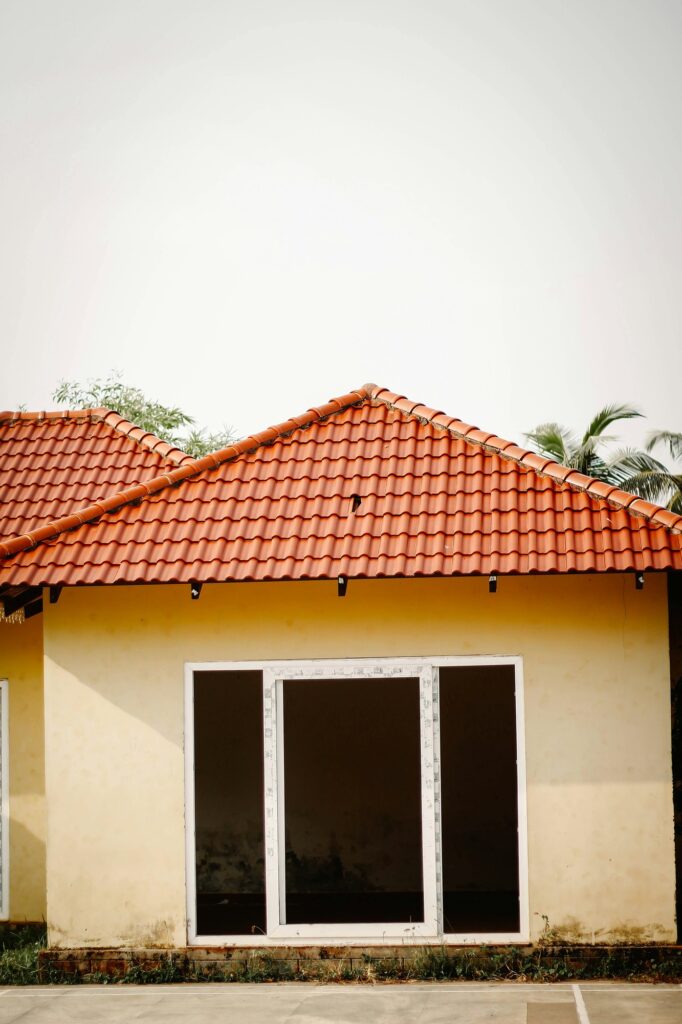Embarking on the project of painting your roof is a transformative endeavour that elevates the aesthetics and protection of your home. However, it’s essential to approach this undertaking with a keen awareness of the potential risks involved. From working at heights to exposure to weather elements, understanding and mitigating these risks is paramount for a safe and successful roof painting experience. Let’s explore the challenges and precautions associated with painting your roof.
Working at Heights
One of the primary risks associated with roof painting is working at elevated heights. Climbing ladders, accessing steep roof slopes, and manoeuvring on potentially unstable surfaces pose inherent dangers. Ensure that ladders are stable, positioned on level ground, and securely anchored. Consider using safety harnesses and fall protection equipment to minimise the risk of falls.
Weather Conditions
Weather conditions significantly impact the safety and success of roof painting. Wet or windy weather can create slippery surfaces, making it hazardous to climb or walk on the roof. Additionally, rain during the painting process can affect the adherence and drying of the paint. Choose clear, dry days for roof painting and monitor weather forecasts to avoid unexpected changes.

Health Hazards of Paint
Paints often contain chemicals that can pose health risks if not handled with care. Inhalation of paint fumes or prolonged skin contact with certain paint formulations can lead to respiratory issues or skin irritation. Use appropriate personal protective equipment (PPE), including masks, gloves, and safety glasses, to minimise exposure. Ensure proper ventilation when working with paint.
Structural Integrity
Climbing on the roof and applying pressure during the painting process may reveal or exacerbate underlying structural issues. Damaged or weakened roofing materials can pose a risk of falls or accidents. Conduct a thorough inspection of the roof’s structural integrity before starting the painting project, addressing any necessary repairs.
Electrical Hazards
If your roof has electrical components, such as wiring for solar panels or satellite dishes, exercise caution to avoid electrical hazards. Ensure that power sources are turned off before painting near electrical components. If you’re unsure about the presence of electrical elements, consult with a professional to assess and mitigate potential risks.
Slippery Surfaces
Paint can make surfaces slippery, especially when wet. Exercise caution when moving on and off the roof, using non-slip footwear and taking deliberate steps. Apply paint in small sections, allowing each area to dry before moving to the next to minimise the risk of slipping.
Equipment Use and Maintenance
Using paint application equipment, such as brushes, rollers, or spray tools, requires familiarity with proper handling and maintenance. Malfunctioning or poorly maintained equipment can lead to accidents or uneven paint application. Regularly inspect and clean your painting tools, following manufacturer guidelines for use.
Wildlife and Environmental Considerations
Depending on your location, your roof may be a habitat for wildlife such as birds or insects. Exercise caution to avoid disturbing nesting areas or encountering aggressive wildlife. Consider environmental factors, such as the impact of paint runoff on vegetation and ecosystems and take measures to minimise environmental harm.
DIY Skill Level
The level of expertise in DIY painting can influence the success and safety of the roof painting project. Understanding the proper techniques, materials, and safety precautions is crucial. If in doubt, consider consulting with professionals or hiring experienced painters to ensure a high-quality and safe result.
Local Regulations and Permits
Before initiating a roof painting project, be aware of local regulations and permit requirements. Some areas may have restrictions on the type of paint, colour choices, or painting practices. Adhering to local guidelines ensures compliance with safety standards and environmental considerations.
Emergency Preparedness
While taking precautions to prevent accidents is crucial, it’s equally important to be prepared for emergencies. Have a first aid kit readily available, know the location of emergency exits, and have a plan for contacting emergency services if needed. Inform someone nearby about your project to ensure assistance in case of unforeseen circumstances.
In Conclusion
Painting your roof is a rewarding endeavour that enhances the beauty and protection of your home. By understanding and addressing the associated risks, you can navigate the heights with confidence and safety. Prioritise safety measures, invest in proper equipment and protective gear, and approach the project with a vigilant mindset.
